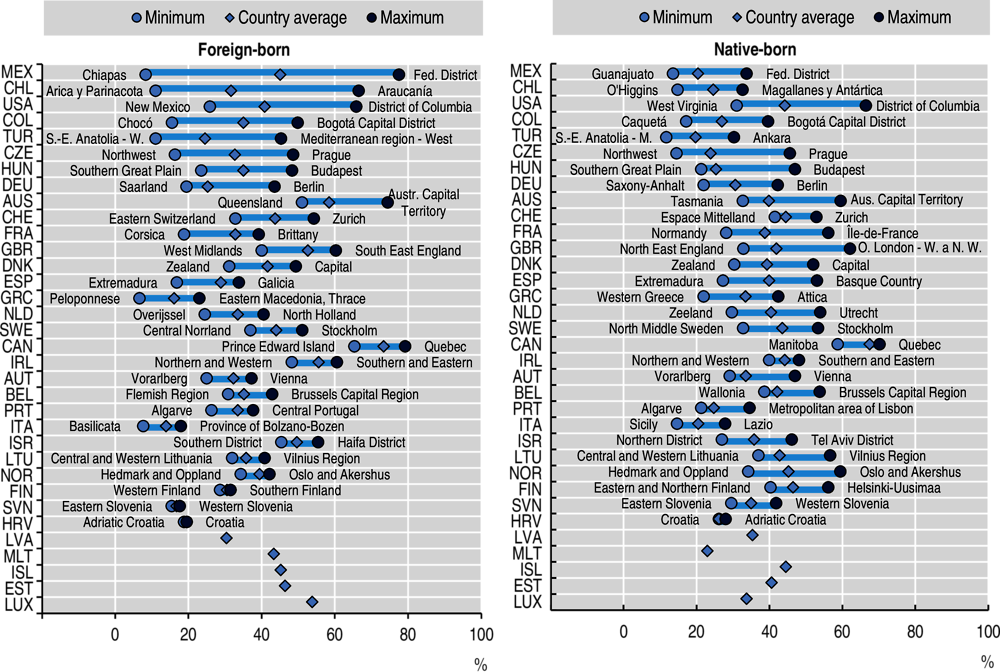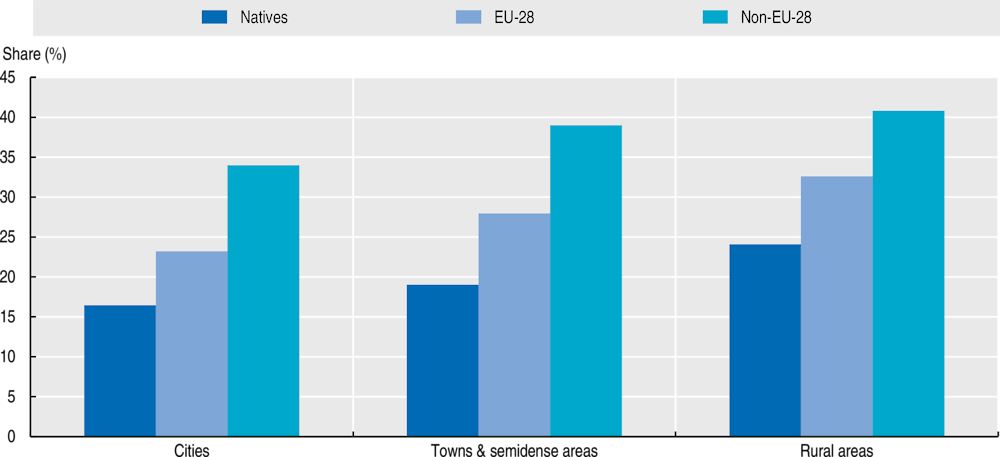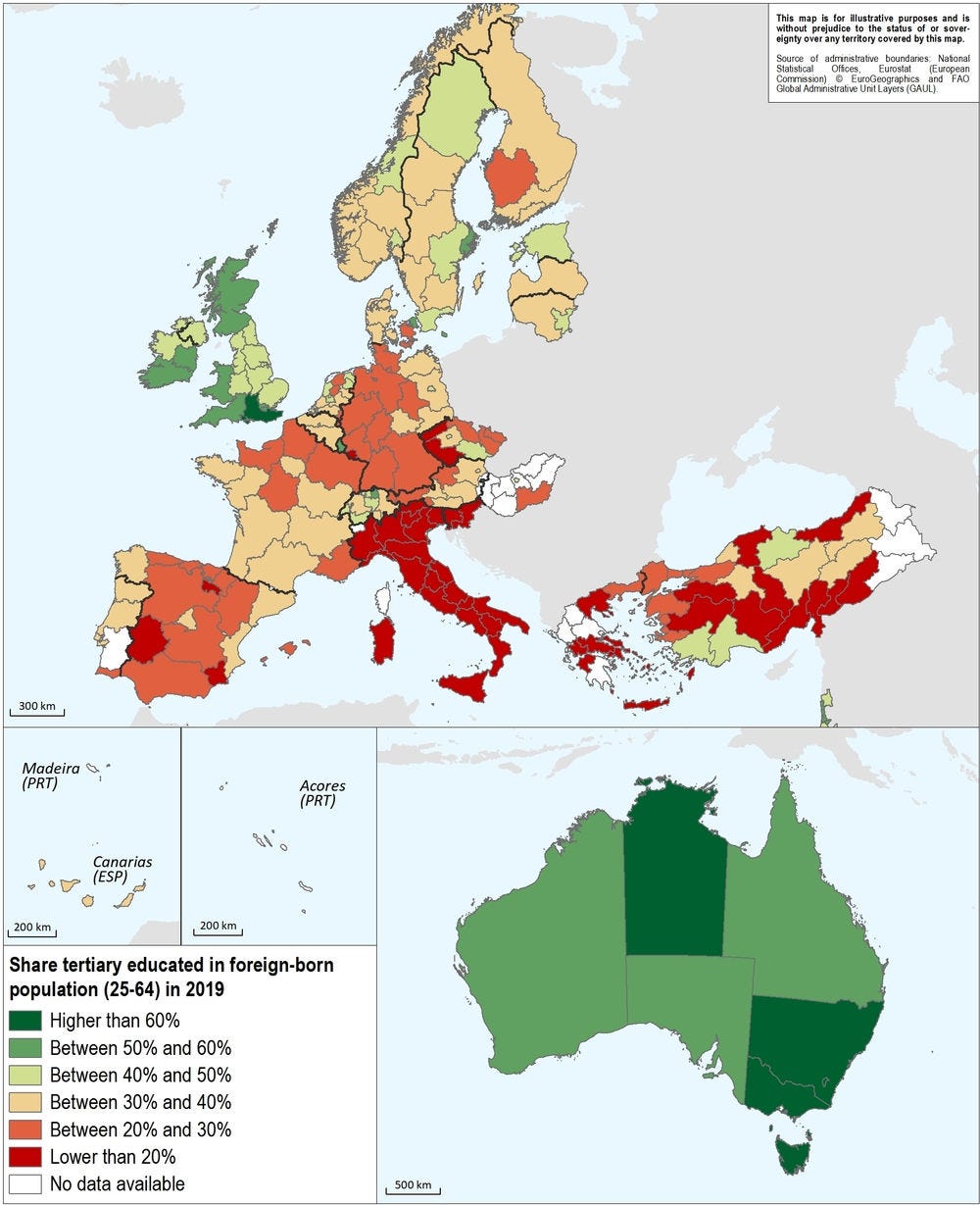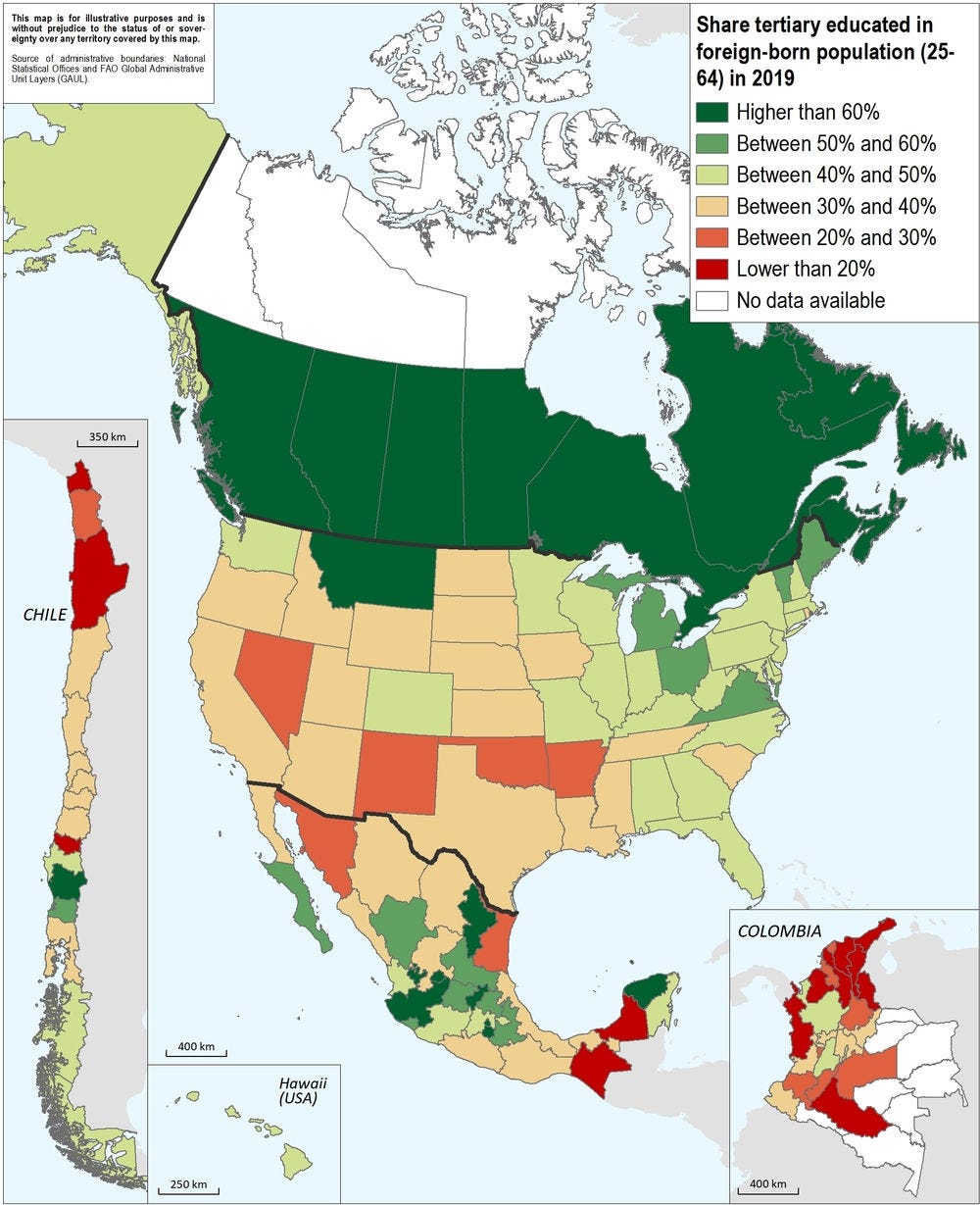Migrants are more likely to be overqualified, especially in lower-density and rural areas.
Educational attainment is a crucial factor in obtaining high-quality jobs. Levels of education of migrants can partially reveal the extent to which migrants struggle to enter and thrive in the regional labour markets of some regions more than in others.
Migrants are highly educated, especially in some OECD countries and regions. In Australia, Canada, Ireland, Norway, Sweden and the UK, most regions show larger shares of highly educated among the foreign-born than among the native-born population, on average (Figures 3.23 and 3.24). In most countries, capital regions house the highest share of both highly educated foreign-born and native-born in their respective country. The share of highly educated migrants represents more than 60% of the foreign-born population in the capital regions of Australia, Mexico and the US. In contrast, in all regions of Italy and Slovenia, less than 20% of the foreign-born population has tertiary education (Figure 3.21).
The labour market, especially jobs that match a worker’s skills and occupation, is one of the main channels through which migrants contribute to regional economies. However, migrants often work in occupations below their qualifications, implying that many will not exploit their full productive and earnings potential. In Europe, the share of individuals who work in occupations below their qualifications tends to be higher outside of cities, for both native-born and migrants (Figure 3.22). Although data on educational achievement is not always available for immigrants, it appears that, in all types of areas in Europe, migrants are more likely to be overqualified, notably when their origin is from non-EU countries (OECD, 2022). While the drivers of the differences in the overqualification shares of native-born and foreigners are manifold, the difficulties associated with recognising foreign professional qualifications are an important factor. This could also explain some of the differences between EU-28 and non-EU-28 migrants, as the recognition process is easier for EU-28 migrants thanks to policies that harmonised diplomas obtained across EU countries.




